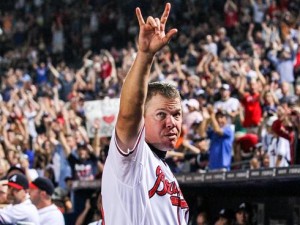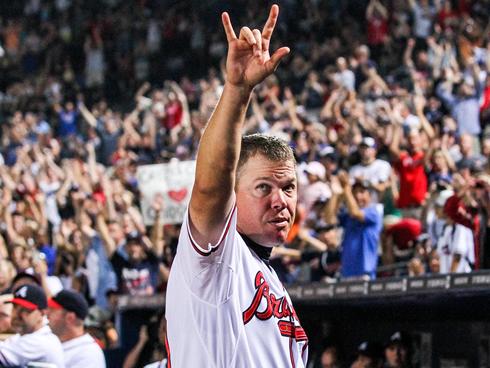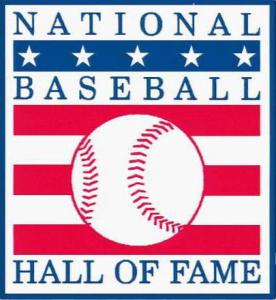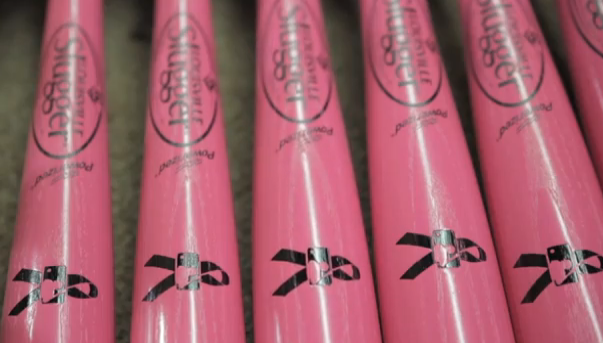
This isn’t Family Feud or Miss USA, but the results are in…
September 23, 2014
Ernst & Young was not needed for the tabulation of these prestigious results.
Over the period of one week, I posted on Twitter, LinkedIn and Facebook asking my friends who had a spare moment to take this survey for class that is based on the popular opinion of Major League Baseball according to fans.
Respondents: 40
Question 1: Are you a fan of Major League Baseball?
Yes: 32 (80%)
No: 8 (20%)
If respondents answered no to question one, they automatically skipped past question two, three and four.
Question 2: Where does your League allegiance lie?
American League: 20 (63%)
National League: 9 (28%)
No Allegiance: 3 (9%)
Question 3: Which is your favorite National League team?
Atlanta Braves: 3 (33%)
San Francisco Giants: 2 (22%)
New York Mets: 4 (44%)
Question 4: Which is your favorite American League team?
Oakland A’s: 2 (10%)
Houston Astros: 1 (5%)
Baltimore Orioles: 2 (10%)
Texas Rangers: 1 (5%)
Tampa Bay Rays: 4 (20%)
Boston Red Sox: 2 (10%)
Detroit Tigers: 1 (5%)
Minnesota Twins: 1 (5%)
New York Yankees: 6 (30%)
Question 5: Should pitchers wear protective headgear?
Yes: 14 (36%)
No: 25 (64%)
Total Responses: 39
Question 6: Has Instant Replay helped enhance the game of baseball?
Yes: 27 (71%)
No: 11 (29%)
Total Responses: 38
Question 7: What do you think about MLB’s Joint Drug Prevention & Treatment Program?
It’s not very good.: 4 (10%)
It’s a good start but it needs improvement.: 29 (74%)
It’s great!: 6 (15%)
Total Responses: 39
Question 8: Should players who are caught taking PEDs or admit to taking PEDs during their time as a professional ball player be eligible for the Hall of Fame?
Yes: 18 (46%)
No: 21 (54%)
Total Responses: 39
Question 9: Is there a problem facing baseball that you believe needs to be addressed? If yes, please elaborate.
This was an optional question with a text field so participants were able to express any concerns without limitation.
Quotes from anonymous participants:
(1) “Baseball and their drug policy look like gold right now in comparison to all the NFL player issues and how the NFL just had to renegotiate their drug policy.”
(2) “As an avid baseball fan I think the season could be shortened without losing the games integrity. Fans lose steam over 7 months.”
(3) “Honestly, free agency for many years now has been so prevalent that the guys you root against one year are on your favorite team in the next one, two or three years. So you’re rooting for a uniform rather than getting to know lots of the players. Free agency is good, but I lost some interest in baseball when the rosters would change significantly and often.”
(4) “With attention spans lower than ever, MLB needs to speed up play to keep fans engaged.”
(5) “Bench clearing brawls need to stop. Enact hockey rules and no one leaves the bench!”
Responses with stars indicate the recurrence in responses.
Pace of the game *******
Salary Cap **
Free Agency
Catcher’s blocking the plate
Bias against players who did PEDs before there was a rule against them.
Cost of seeing a game.
Not enough day games during the World Series.
Home field advantage being determined by the All-Star Game.
Bench clearing brawls
My Analysis:
* Major League Baseball has had ongoing conversations for years about PEDs and the Hall of Fame. I wanted to take a look at the teams that had well known substance users that were popular figures in the game and see if that team’s fans were for or against the admittance of players known for PED use into the Hall of Fame.
Oakland Athletics (Jose Conseco): 100% of respondents said yes, offenders should be able to be eligible for the Hall of Fame.
New York Yankees (Alex Rodriguez): 5 respondents said no, a player who did PEDs should not be eligible, and 1 respondent said yes they should be eligible.
San Francisco Giants (Barry Bonds): This was split 50% / 50%.
(Disclaimer for above: The players listed above are not the only players who have taken performance enhancing drugs during their careers–they are just some of the more popular cases. The teams associated with each player indicate the team the player is best known for playing with even though he may have played for multiple ball clubs.)
* I was alarmed by the 64% of respondents that indicated pitchers should not wear protective headgear. That really makes me wonder about what type of action they believe should be taken in place of the headgear then since so many players have sustained dangerous injuries. We can see on the reverse side of things that a batter wears a helmet to protect himself from getting hit in the head so my case is based off of that. Why does it become okay for a hitter to protect their head but not a pitcher? Some make the case of movement and that a helmet could prevent a pitcher from performing at full potential.
I will warn you that some of the below incidents with a ball hitting a pitcher may be a little unsettling to watch. Here is a story that ESPN did featuring pitchers who have gotten hit and how they feel about the protective headgear.
8/7/2014 – Miami Marlins pitcher Dan Jennings is hit with a 101 mph line drive off the bat of Pirates’ Jordy Mercer.
3/19/2014 – Reds’ Aroldis Chapman suffered fractures above his left eye and nose after being hit in the face by a ball off the bat of Royals’ Salvador Perez.
6/15/2013 – A little over a month after J.A. Happ fractured his skull in Tampa, Rays’ Alex Cobb is hit by a blast from Eric Hosmer of the Royals on the same mound.
5/7/2013 – J.A. Happ of the Toronto Blue Jays fractured his skull when getting hit with this line drive off the bat of Tampa Bay’s Desmond Jennings.
9/5/2012 – While a member of the Oakland Athletics, Brandon McCarthy is hit by a line drive off the bat of Angels’ Erick Aybar.
These are just some of the more recent head injuries and do not account for every happening.
Alex Torres of the San Diego Padres became the first pitcher to wear protective headgear. He is quoted as saying, “It could save our lives, if someone hits a ball to your head. I get it for free, so I’m just gonna use it to see how it feels.”
My follow up question to you is, what should be done?
* Like the vast majority of participants in my survey, I agree that MLB has done a great job with creating a policy to prevent the illegal use of drugs in the game and that over time, they will be able to make improvements to better it. It’s a good start.
Thank you to everyone who took the time to participate in my survey. I really enjoyed viewing the results and reading the anonymous comments. Many of you brought up really great concerns about the future of our pastime and I fully believe that Major League Baseball is dedicated to sustaining the history and culture of our favorite game while diligently working to make improvements.





Fatal error: Call to undefined function wp_get_loading_optimization_attributes() in /home/c4xq6mwgminn/public_html/meganwashington1/wp-includes/pluggable.php on line 2889